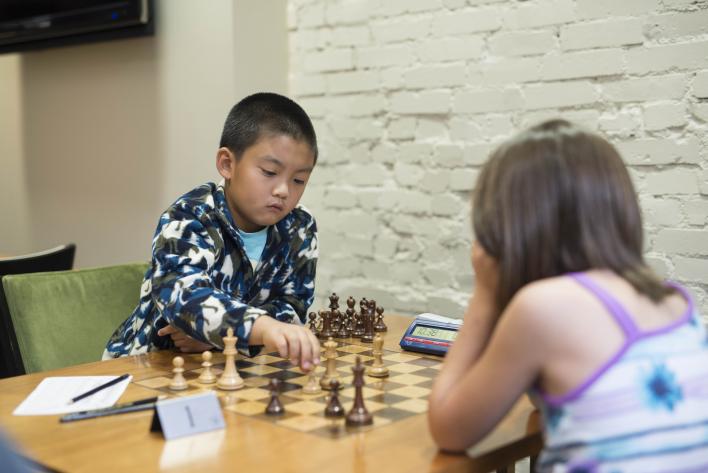
by Emily Sholtis & Matthew Pepper, Basis Policy Research
The Chess Club and Scholastic Center of St. Louis (CCSCSL) prides itself in empowering local students to succeed both in academics and in the game of chess. Through its in-school and after-school programs, the club reaches nearly 4,000 students each semester with roughly equal participation by male and female students. Of the roughly 70 schools served by the CCSCSL, three are all girls schools. The CCSCSL also hosts events geared specifically toward engaging women in chess including weekly Ladies Knight classes, chess events for local Girl Scout Troops, and the annual U.S. Women’s Championship. Unfortunately, while physical capabilities are irrelevant in a chess match, chess is still inarguably male-dominated.
The FIDE’s September 2016 list of grandmasters identifies 1530 players who have earned chess’s highest honor. Only 33 (2%) of those players were women. Furthermore, none of the world’s top 100 players are women. This dramatic gap begs the question, why is there such a dramatic gender gap in chess?
A review of chess literature finds limited empirical, peer-reviewed literature exploring potential reasons for the gender gap in chess. One example we located was a 2007 study in which male and female players of equal ratings were matched and played online. When women were unaware of their opponent’s gender, they won roughly 50% of their matches. However, when they believed their opponent was a male, that percentage dropped to only 25%. This difference was attributed to social expectations, confidence, and conditioning. We also located a second piece of research from a team at the University of Barcelona and the Institut d’Economia de Barcelona (IEB) which used performance in elite chess tournaments to explore how men and women react to competition. This working paper, which uses creative and rigorous metrics for assessing the quality of play, finds that both genders respond to competition in ways “that are detrimental to the performance of women”. Women see significantly worse outcomes in games when their opponent is male and, while their quality of play does not change, men are more persistent before resigning in matches against women. The researchers finds that these are outcomes are driven by stereotype threat, competitiveness, and differential responses to the stakes of a game. This work contrasts to the 2007 study because, in the University of Barcelona paper, competitors were always aware of their opponent’s gender.
Despite the lack of chess and gender research, there is a wealth of research delving into the gender gap in areas such as computing, engineering, mathematics, science, and analytics (all of which are tied to academic areas chess has been found to improve among students). As a result, some professionals have likened the gender gap in chess to the gender gap seen in STEM fields. Despite making up half of the American workforce, women hold fewer than 25 percent of all STEM jobs. The body of research finds numerous reasons that may account for this disparity including stereotyping, cultural expectations, implicit bias, and school/workplace environments. Most notably however, research finds no evidence of “biologically driven gender differences” in abilities or interests.
Based on the available literature and the links between chess and STEM as well as STEM and gender, we would like to highlight the following as areas of interest for future research:
1) Chess, Gender, and Noncognitive Benefits – Do the noncognitive benefits of chess differ in type or magnitude by gender?
2) Chess, Gender, and Academics – Do the academic benefits of chess, namely in math and science performance, differ in type or magnitude by gender?
3) Women and Chess – What are the specific social, emotional, and cultural factors impacting the level of interest, participation rates, and success of women in chess?
4) Chess and Equality – What intervention or adaptations could be made within in-school and after-school chess programs in order to better attract and retain female players?
These are only a few of many potential research ideas that could be pursued in the field of chess and gender. If any research is published, we’ll cover it as we track the newest #ChessResearch!


